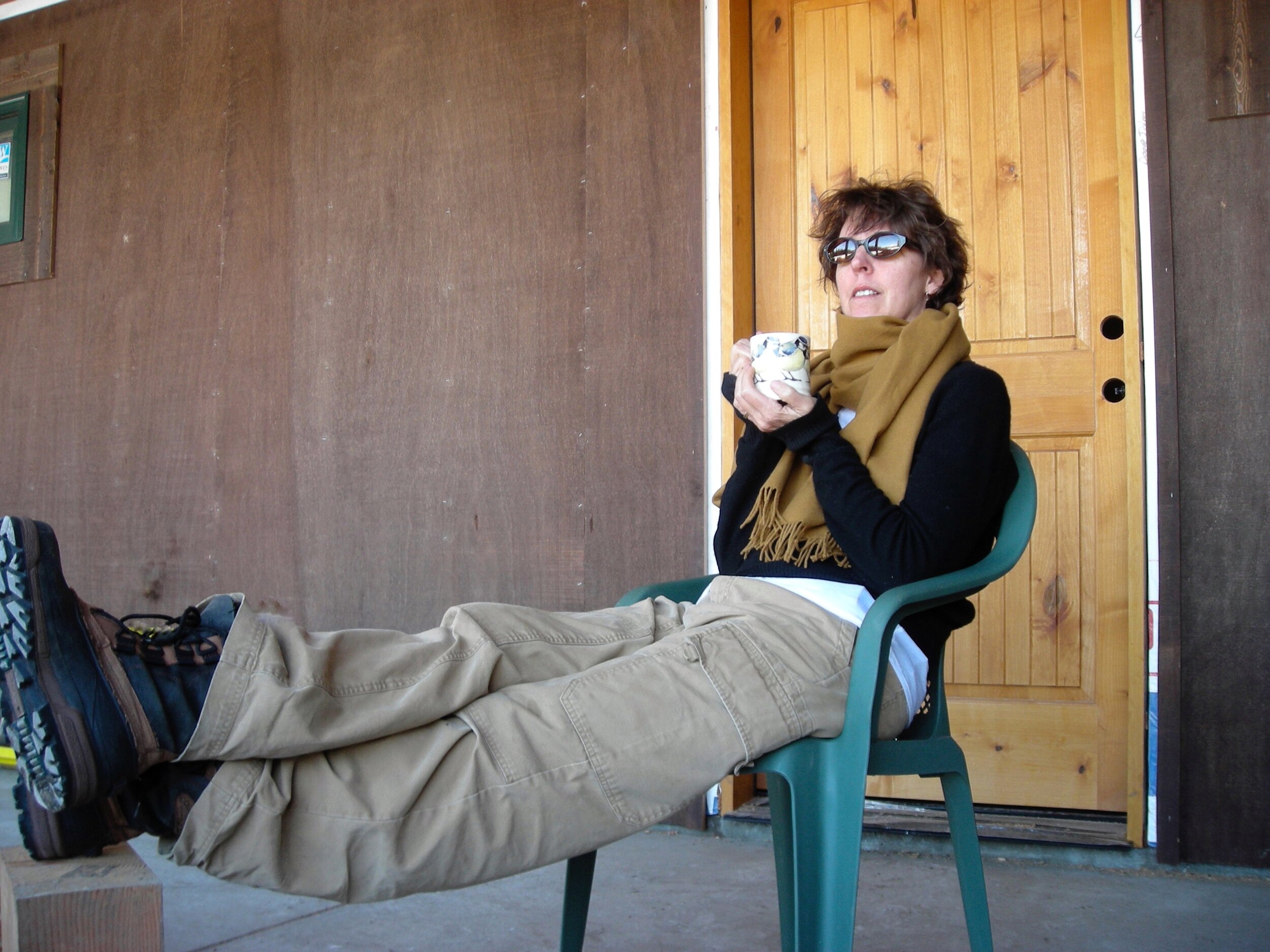Fourteen years ago when we first set foot on the five acres we now call home, we were smitten. Mt. Adams, the 12,281’ high volcano sat directly in front of what was to become the site for the house. Pine woods on three sides gave the property a tucked in feel, and would provide protection from the winds that can frequent our valley. Sitting at just under 2000 feet, we were guaranteed all four seasons. Standing together and taking it all in, we began to envision building the home that we had first imagined over a bottle of wine, on the back of a cocktail napkin, the year our youngest daughters went off to college.
It was hard to fathom that we might actually be able to realize our long held dream of building a rustic home, east of the mountains, where we could live and that we could share with family and friends. I mean who gets to do that? And why?
Slowly the house took shape as we split our time between the city where our jobs were, and this piece of ground where our hearts were.
Sitting on the porch with my coffee 13 years ago, I continued to wonder, who gets to do this? And why?
2008
Thirteen years later, sitting on the porch with my coffee, I continue to ponder, who gets to do this? And why?
2021
Living here, having created the place that we hope to call home for years to come, is an unbelievable gift. I’ve never felt that we owned it. It is ours to steward, share, and make use of for the good of many. A safe haven and refuge for all who come here, and a place from which to imagine and work for a more just, loving, and inclusive world.
After this past year, I am starkly aware of the immeasurable, culturally inherent privilege granted to us that has made this dream of ours possible.
And to whom much is given, much is required.






